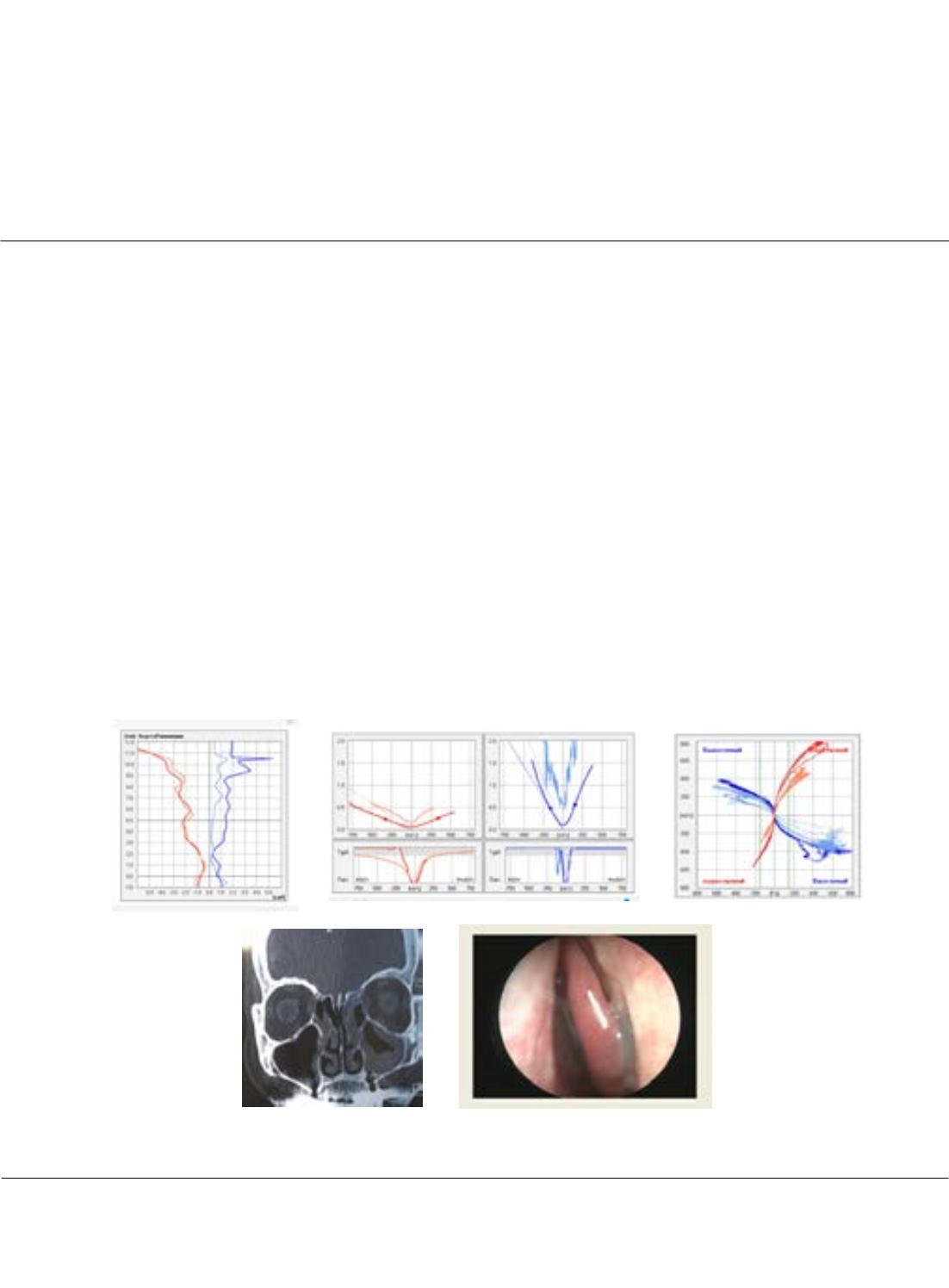

Page 34
Volume 09
Otolaryngology: Open Access
ISSN: 2161-119X
ENT 2019
Craniofacial Surgery 2019
August 15-17, 2019
JOINT EVENT
conferenceseries
.com
August 15-17, 2019 Rome, Italy
&
3
rd
International Conference on
Craniofacial Surgery
4
th
European Otolaryngology-ENT Surgery Conference
Nasal obstruction: Amodern view of the problem
Marina Budkovaia Aleksandrovn
St. Petersburg Research Institute, Russia
N
asal breathing disorder leads to the complex formation of pathological conditions and reduces significantly the
quality of patients’ life. Particular difficulties arise when patients’ complaints of nasal breathing difficulty do
not correspond with the results of rhinoscopic picture of the nasal cavity, as well as when patient is dissatisfied with
the results of surgical treatment in relation to the restoration of respiratory function of the nose. In order to solve
this problem, we conducted an objective diagnosis of nasal breathing disorders with the calculation of the main
aerodynamic parameters of the nasal flow and a differential analysis of the causes of nasal obstruction formation,
followed by a comparison of the identified changes to the results of multispiral computed tomography(CT) of the
paranasal sinuses and nasal endoscopy examination of the nasal cavity and motor activity evaluation of the nasal
cavity shimmering epithelium. This diagnostic complex is used in the examination of patients with subjective nasal
breathing disorders before the planned surgical treatment and in long term after surgical correction of the external
nose, intra-nasal structures and in the selection of patients with allergic rhinitis for allergic - specific immunotherapy.
Simultaneous analysis of the parameters of anterior active rhinomanometry (AARM), rhinoresistometry and acoustic
rhinometry before and after the test with decongestant allows to identify objectively or exclude the presence of nasal
obstruction, to differentiate the causes of nasal breathing disorders into functional, structural and combined. The
registered changes in the proposed method are compared with the results of nasal endoscopy and CT of the sinuses
of the nose and are used to determine conservative or surgical management of patients to achieve good functional
result and objective control of the effectiveness of nasal breathing restoration.
Marina Budkovaia Aleksandrovn, Otolaryngol (Sunnyvale) 2019, Volume 09
4. 5. Fig. A: The results of an objective study in a patient with mixed structural-functional component: 1.-
AARM; 2.- resistometry.3.- acoustic rhinometry. 4.- CT scan.5.- nasal endoscopy.
















